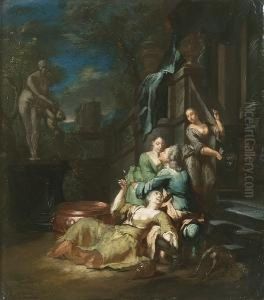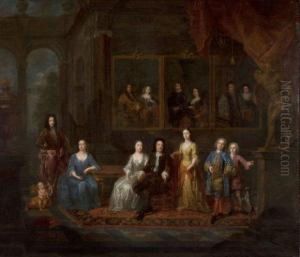Jan Carel Vierpeyl Paintings
Jan Carel Vierpeyl, born in 1742, was a Dutch artist whose work and influence spanned the late 18th and early 19th centuries. Vierpeyl was primarily known for his expertise in sculpture, a field in which he made significant contributions during his lifetime. Although not as widely recognized as some of his contemporaries, his work remains an important part of the Dutch artistic heritage, reflecting the stylistic transitions and cultural shifts of his time.
Vierpeyl's career unfolded during a period of considerable change in Europe, marked by political upheavals, the Enlightenment, and the early stages of the Industrial Revolution. Within this context, his artistry was characterized by a blend of traditional and emerging styles, showcasing his ability to adapt and innovate. Despite the lack of extensive documentation on his life compared to more famous artists, Vierpeyl's surviving works and the records of his commissions suggest that he enjoyed patronage from a range of clients, including institutions and individuals of high social standing.
Throughout his career, Jan Carel Vierpeyl contributed to various projects, including public monuments and private commissions, which showcased his skills in sculpting figures and decorative elements. His work reflects the artistic movements of his time, embodying elements of Neoclassicism with its emphasis on simplicity and symmetry, inspired by the art and culture of ancient Greece and Rome. This was a departure from the more ornate and elaborate styles that had dominated European art in the previous centuries.
Vierpeyl's legacy, though perhaps not as prominent as that of his peers, is preserved through his contributions to the Dutch art scene and the pieces that survive him. His death in 1815 marked the end of a career that spanned some of the most tumultuous and transformative decades in European history. Today, scholars and enthusiasts of Dutch art continue to study his work, recognizing Jan Carel Vierpeyl as a skilled sculptor who captured the essence of his era through the medium of sculpture.

